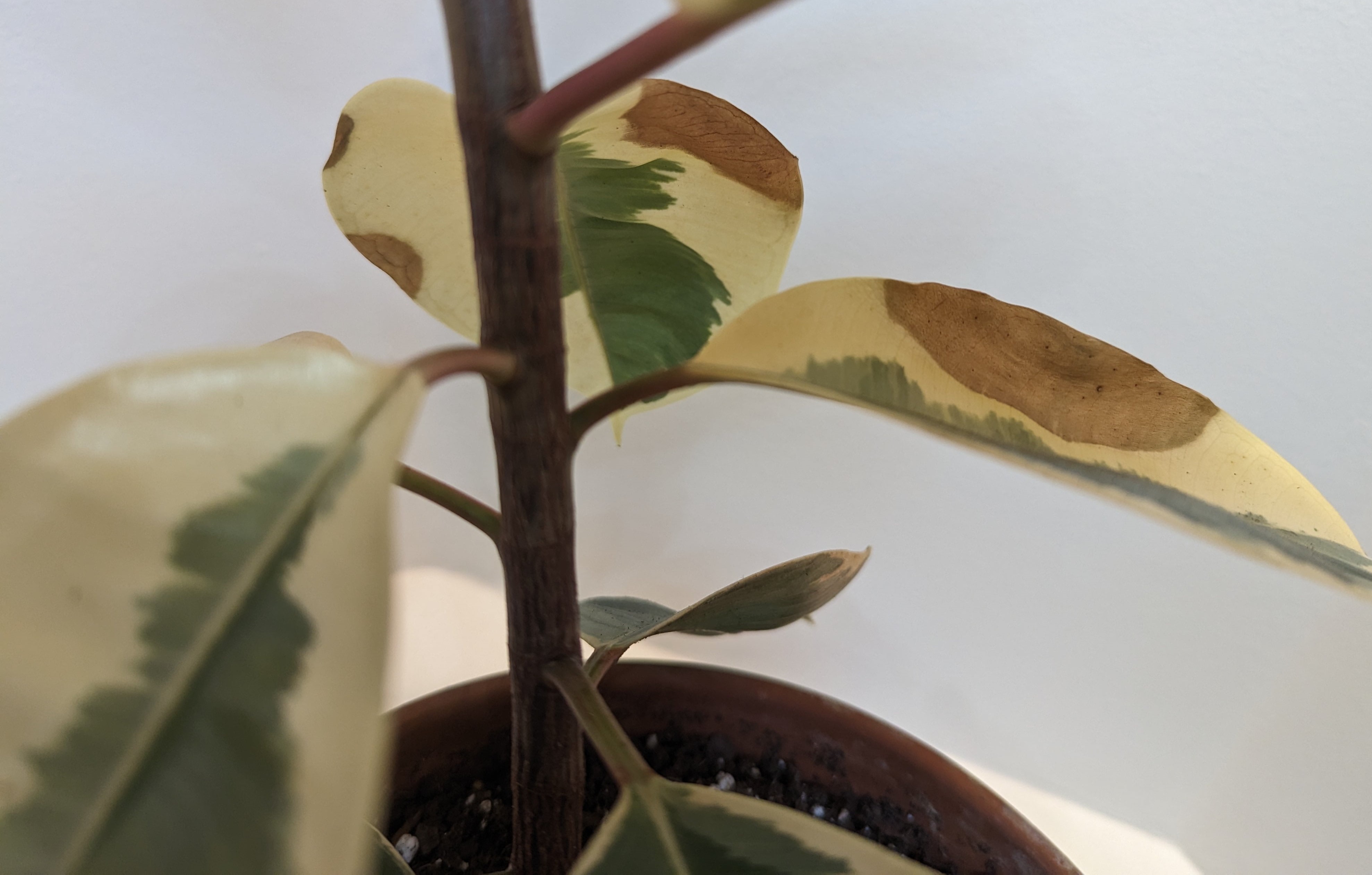Rubber Plant Watering
Rubber Plants are a houseplant mainstay. They’re not overly popular but they have been grown by many as houseplants for a long time. They sport thick leaves that can be found in an assortment of colors. The most popular varieties are Burgundy, Tineke, and Ruby. Rubber Plants aren’t known for their vigorous growth, at least not as houseplants. That leads people to wonder whether they are watering properly. In this post, I’ll cover everything you need to know about Rubber Plant watering.
How to Time Rubber Plant Watering
There is no set frequency of watering I can direct you to follow. Watering frequency depends on too many factors like pot size, how many drainage holes your pot has, how much water you give each time, how many stems are in the pot, how much sun it receives, and your home’s relative humidity. That list isn’t even exhaustive. If you keep your plant indoors and you’re watering it properly, you may be able to stick to a weekly schedule once you learn how much water to supply each time. General consensus from plant growers is that you should aim to water deeply and less often rather than in frequent small amounts.
The intervals and amount of water you give will also change throughout the year. During the growing season, you will need to water more frequently and then you should start to pull back on watering when your plant goes dormant. Generally speaking spring, summer, and early fall are the growing season and winter is dormancy. Your plant will go dormant when sunlight is in short supply. You may get some growth during dormancy, but don’t expect much and it’s best not to encourage growth during that time either.
Bottom Watering a Rubber Plant
If your plant is small enough to move around, you may want to consider bottom watering your Rubber Plant. This is a technique where you fill a sink or tub with water up to a few inches and then place your plant pot directly into the vessel. Leave it there for about ten minutes to allow the roots and soil an opportunity to soak up the water from the drainage holes in the bottom of the pot. It can be messy to do this because once you’re done, a lot of water will drain out when you lift your plant pot out of the water.
When to Water a Rubber Plant
Whether you water from the top of your pot or the bottom, the most important thing is that you wait until the soil has dried about two inches from the top before you provide your plant with more water. You can use your finger to test moisture by sticking it in the soil. I personally don’t like to get dirt under my fingernail if I don’t have to, so I use a simple soil moisture meter. In my experience, this tool gives you more information and helps you become better at judging how much water to give at each watering.
Rubber Plant Watering Mistakes
If you have sought out this post you may be questioning whether you have made a watering mistake with your Rubber Plant. You may have overwatered or underwatered your Rubber Plant. If you’re not sure, read on to learn about the signs of each mistake.
Underwatered Rubber Plant
An underwatered Plant will give you some visual signs. This may help you diagnose underwatering. Unlike other plants, the Rubber Plant leaves don’t really droop when they need water. This is because they have comparatively thick leaves and stems. You will most likely see yellowing of the leaves if your plant is underwatered. The tips of the leaves may become brown and crispy as well. It’s not optimal to wait for these signs because they are evidence of stress. Instead, you should proactively check the soil moisture to make sure you aren’t underwatering. Refer back to the section When to Water a Rubber Plant for more information on how to monitor soil moisture.
If you believe you have been underwatering, then you need to up the frequency or amount of water that you’re supplying. Again, a soil moisture meter is going to help you stay on top of things and be more informed about your watering habits.
Overwatered Rubber Plant
An overwatered Rubber Plant may have leaves that appear wilted, which can be confusing. Wilting might make you think it needs more water, but it’s actually the opposite. Leaves on overwatered Rubber Plants may also have brown spots as pictured below.

If you are overwatering your Rubber Plant, you may just need to pull back on watering. However, if you have been overwatering for a long time, then you may be in a situation where the roots have rotted. Root rot is difficult to treat. To decipher if you have root rot, you can carefully pull your Rubber Plant out of its pot and inspect the roots. If the roots are dark brown and mushy, then they're rotten. Follow a separate pot I have on fixing a plant with root rot.
Do you have any other Rubber Plant watering questions? Ask in the Comments.
Add new comment